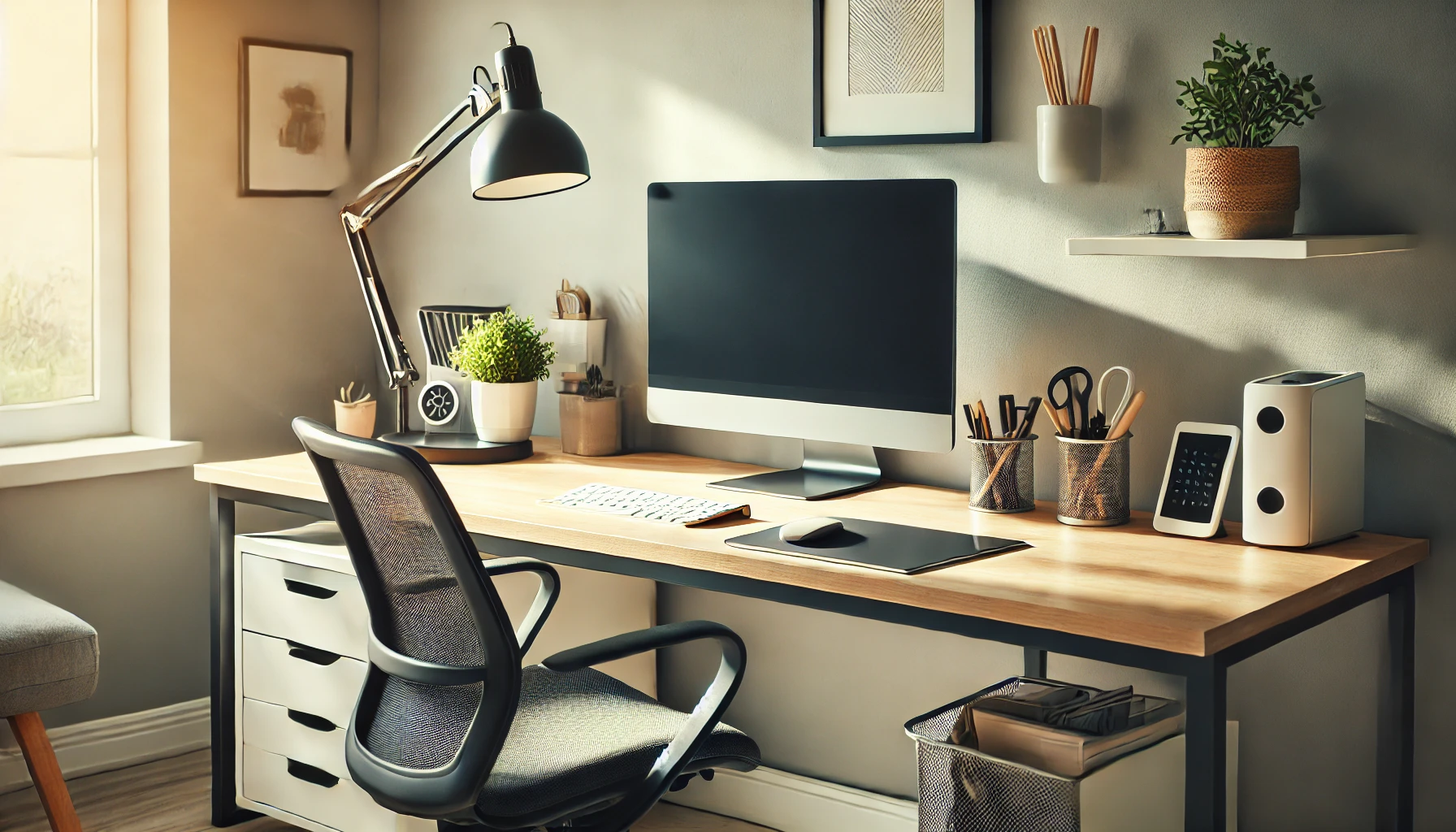1. Choose the Right Location
Your home office should be quiet, well-lit, and distraction-free. If possible, set up your workspace in a separate room or a dedicated corner to mentally separate work from personal life.
2. Invest in Ergonomic Furniture
✔ Desk: Choose a height that allows comfortable posture.
✔ Chair: Use an ergonomic chair to support your back.
✔ Monitor: Position your screen at eye level to reduce neck strain.
3. Declutter Your Workspace
A messy desk can be distracting. Keep only the essentials:
✔ Laptop or computer
✔ Notebook and planner
✔ Pen holder and sticky notes
Use drawers, shelves, or organizers to store extra items.
4. Improve Lighting for Productivity
✔ Natural light is best—place your desk near a window.
✔ Use a desk lamp with warm lighting to reduce eye strain.
5. Manage Cables and Electronics
✔ Use cable organizers to keep wires tidy.
✔ Charge devices in a designated spot to avoid clutter.
6. Add Productivity Boosters
✔ A whiteboard or corkboard for reminders and goals.
✔ Noise-canceling headphones to block distractions.
✔ Plants to enhance air quality and reduce stress.
7. Set Up a Daily Reset Routine
✔ At the end of each day, spend 5 minutes tidying up.
✔ Keep a checklist to ensure your workspace stays organized.
Final Thoughts
A well-organized home office improves focus, reduces stress, and boosts productivity. With these simple changes, you can create an efficient and inspiring workspace!


